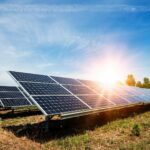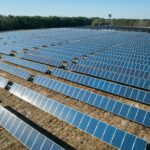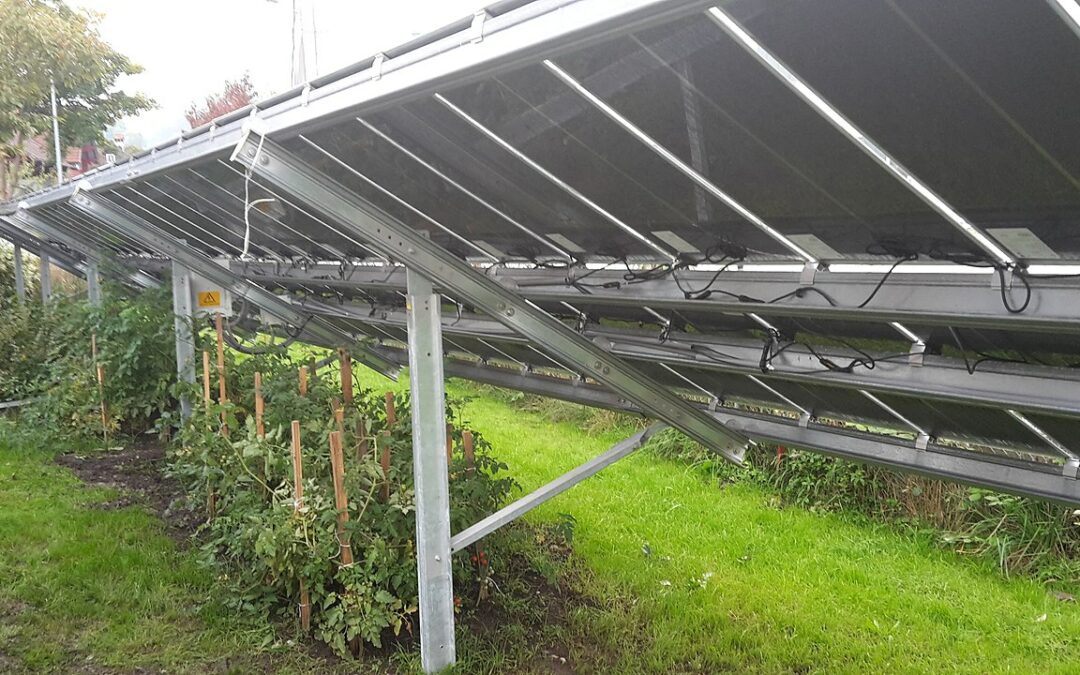Researchers have conducted a comprehensive analysis and determined that a ground-breaking renewable energy concept has the potential to significantly reduce the payback period for solar panels to less than five years. This innovative approach, known as agrivoltaics or Agri-PV, involves the integration of solar farms with “shadow-friendly” crops. A team of experts from the esteemed University of Lisbon and the Military Academy in Portugal collaborated on this study, highlighting the immense potential of Agri-PV to expedite the global transition towards sustainable energy sources.
By combining agricultural and energy production, Agri-PV not only enhances the value derived from the land but also surpasses the benefits offered by standalone solar farms or agricultural practices. This remarkable synergy is further bolstered by the declining costs of solar panels in recent years and the pressing need for novel solutions to address the growing demands of food production and energy generation. The researchers emphasize that these projects not only augment green energy production and reduce reliance on non-renewable sources but also contribute to a significant reduction in CO2 emissions.
The study reveals that the payback periods for Agri-PV projects range from four to five years, underscoring the economic viability and long-term sustainability of this approach. The researchers assert that Agri-PV surpasses the value proposition of standalone photovoltaic (PV) or agricultural endeavours. These ground-breaking findings have been meticulously documented in a paper titled ‘Agri-PV in Portugal: How to combine agriculture and photovoltaic production,’ which has been published in the esteemed journal Energy for Sustainable Development.
The versatility of the Agri-PV concept is another compelling aspect, as it can be seamlessly integrated into various agricultural practices such as beekeeping, greenhouses, livestock, and horticulture. The implementation of Agri-PV solutions will be tailored to suit the specific requirements of each agricultural domain, ensuring optimal energy efficiency and food production.
Numerous countries are currently delving into the possibilities offered by agrivoltaic systems. Notably, China, Germany, Japan, and the US are among the nations investing in this innovative technology. In South Korea, trials of agrivoltaic farming have already yielded successful broccoli crops.
A comprehensive study conducted in 2022 examined this project and concluded that the quality and taste of the broccoli were on par with those grown using traditional farming methods. This finding highlights the potential of agrivoltaic systems to produce high-quality crops.
Furthermore, the versatility of these systems extends beyond broccoli. Other crops such as carrots, radishes, lettuce, tomatoes, and potatoes can thrive in such environments. Additionally, berries like strawberries, blueberries, and raspberries show promising potential for successful cultivation within agrivoltaic systems.
The exploration of agrivoltaic systems by various countries underscores the growing interest in sustainable and efficient agricultural practices. As the benefits of this technology become increasingly evident, it is likely that more nations will join the ranks of those investing in agrivoltaics.
Do you have land for an Agrivoltaic Farm?
Do you have land in the UK that could be suitable for an agrivoltaic farm? If so, we would love to hear from you! We are looking for landowners who share our vision of powering the UK on solar energy. Together, we can make a difference, by building agrivoltaic farms that benefit everyone in not only the short-term, but also in the long-term.
Frequently Asked Questions About Agrivoltaic Farms
Agrivoltaic farming works best with crops that can grow in the shade, such as leafy greens, root vegetables, berries, tomatoes, and peppers like Basil, Broccoli, Celery, Chiltepin peppers, Corn/maize, Lettuce, Pasture grass, Potatoes, Spinach, Tomatoes, and Wheat. But the best crops for agrivoltaics also depend on the weather where they are planted. For example, in places that are very hot and sunny, like southern Europe, crops that need less shade – such as olive trees or grape vines – might also do well with agrivoltaics.
Yes, you can legally install solar farms on agricultural land in the UK, as long as the land is not protected or listed, or part of a conservation area. All solar farms need planning permission in the UK, and if they have more than 50 megawatts of capacity, they need development consent from the Secretary of State for the Department of Energy Security and Net Zero. Also, if you want to set up a solar farm on land that you do not own, you have to get permission from the owner before installing anything.
The biggest threat to British food production and security is not solar PV generation on moderate quality agricultural land, but is in fact climate change . As the 2022 summer heatwave has shown, the UK is poorly equipped to deal with the extremes wrought by a changing climate.
The average ROI (return on investment) for a solar farm in the UK is between 10 to 20%. Meaning, most solar farms pay off their installation costs within the first five to ten years. After that they are pretty much printing free money. As long as they are well maintained and offer consistent, reliable energy production.
Based on the average annual consumption of a household, for every 5 megawatts (MW) of solar PV installed, a solar farm will power approximately 1,500 homes for a year. Approximately 25 acres of land is required for every 5 megawatts (MW) of solar PV installation.
At 72.2MWp, Shotwick Solar Park is the largest solar park in the UK and the largest private wire connection in the UK. Located in Deeside, Flintshire, the solar park supports the UPM paper manufacturing plant which operates 24/7 and manufactures 100% recycled paper.
Latest Posts about Solar Farms
- New solar panel concept could reduce payback time to just five years
 Researchers have conducted a comprehensive analysis and determined that a ground-breaking renewable energy concept has the potential to significantly reduce the payback period for solar panels to less than five years. This innovative approach, known as agrivoltaics or Agri-PV, involves the integration of solar farms with “shadow-friendly” crops. A team of experts from the esteemed… Read more: New solar panel concept could reduce payback time to just five years
Researchers have conducted a comprehensive analysis and determined that a ground-breaking renewable energy concept has the potential to significantly reduce the payback period for solar panels to less than five years. This innovative approach, known as agrivoltaics or Agri-PV, involves the integration of solar farms with “shadow-friendly” crops. A team of experts from the esteemed… Read more: New solar panel concept could reduce payback time to just five years - UK’s largest solar farm given go ahead to be built in Chelmsford, Essex
 Longfield Solar Farm: A Giant Step Towards Renewable Energy in the UK The UK government has approved the construction of the country’s largest solar farm near Chelmsford, Essex. The project, called Longfield Solar Farm, will cover about 380 hectares (940 acres) of farmland and generate up to 500 megawatts (MW) of electricity, enough to power… Read more: UK’s largest solar farm given go ahead to be built in Chelmsford, Essex
Longfield Solar Farm: A Giant Step Towards Renewable Energy in the UK The UK government has approved the construction of the country’s largest solar farm near Chelmsford, Essex. The project, called Longfield Solar Farm, will cover about 380 hectares (940 acres) of farmland and generate up to 500 megawatts (MW) of electricity, enough to power… Read more: UK’s largest solar farm given go ahead to be built in Chelmsford, Essex - 5 Biggest Solar Farms in the UK 2023
 Last Updated: 9 November 2023 How Solar Farms are Powering the UK’s Green Energy Transition Solar energy is one of the most promising sources of renewable energy in the world. It is clean, abundant and affordable, thanks to the rapid advances in solar technology. In the UK, solar energy is playing a key role in… Read more: 5 Biggest Solar Farms in the UK 2023
Last Updated: 9 November 2023 How Solar Farms are Powering the UK’s Green Energy Transition Solar energy is one of the most promising sources of renewable energy in the world. It is clean, abundant and affordable, thanks to the rapid advances in solar technology. In the UK, solar energy is playing a key role in… Read more: 5 Biggest Solar Farms in the UK 2023

